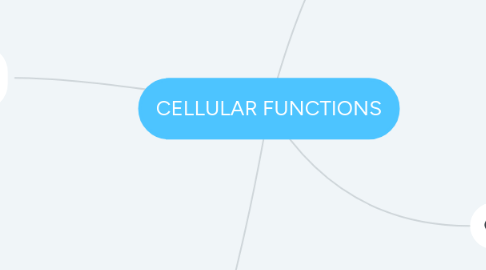
1. transport through the plasma membrane
1.1. semipermeable
1.2. channel proteins
1.2.1. facilitated diffusion
1.3. cell membrane
1.3.1. phospholipid
1.3.1.1. make up the plasma membrane
1.3.1.2. consist of a glycerol molecule, two fatty acids.
1.3.1.3. keep the membrane fluid
1.3.2. hydrophilic head
1.3.2.1. allow water and water soluble molecules to pass and enter the cellular membrane
1.3.3. hydrophobic tail
1.3.3.1. prevent polar molecules or ions to pass through membrane
1.3.3.2. barrier against water soluble substances
1.3.4. glycolipid
1.3.4.1. maintain stability of cell membrane
1.3.4.2. facilitate cell-cell interactions
1.3.5. glycoprotein
1.3.5.1. cell-cell recognition
1.3.5.2. binding to other molecules
1.3.5.3. help cells attach to one another and form tissues
1.3.6. carbohydrate chain
1.3.6.1. energy production
1.3.6.2. storage
1.3.6.3. cell identity markers
1.3.7. cholesterol
1.3.7.1. restrict passage
1.3.7.2. increases packing of phospholipids
1.3.7.3. prevent water soluble molecules diffusing across the membrane
1.3.8. peripheral protein
1.3.8.1. temporary bonds
2. How they interact
2.1. Cell membrane
2.1.1. need to pass molecules through, in order to be able to conduct photosynthesis and cellular respiration
2.1.2. the semi-permeable membrane allows the molecules used in photosynthesis and cellular respiration to enter the cell.
2.2. Photosynthesis
2.2.1. The cell membrane allows the molecules needed for photosynthesis to enter the cell, where they then enter the chloroplasts.
2.3. cellular respiration
2.3.1. the cell membrane allows the molecules needed for cellular respiration to enter the cell, where they then enter the mitochondria (after glyoclysis occurs in the cytoplasm)
3. Photosynthesis
3.1. Light Dependent Stage
3.1.1. inputs: Sunlight, water, ADP+P, NADP+
3.1.2. outputs: oxygen gas, ATP, NADPH, carbon dioxide.
3.2. Light Independent Stage
3.2.1. inputs: oxygen, ATP, NADPH, carbon dioxide.
3.2.2. outputs; glucose, water, ADP+P, NADPH+
4. Cellular Respiration
4.1. Glycolysis
4.1.1. inputs: glucose, 2ADP, 2Pi, 2NAD+
4.1.2. outputs: 2 Pyruvate, 2ATP, 2NADH
4.1.3. In glycolysis, glucose splits into 2 pyruvate molecules. Pyruvate= 3 carbon molecules.
4.1.4. happens in the cytoplasm (near mitochondria)
4.2. Kreb's Cycle
4.2.1. inputs: 2 Pyruvate molecules
4.2.2. Outputs: 2FADH, 8NADH, 6CO2, 2ATP.
4.2.3. occurs in the inner component of the mitochondria.
4.2.4. the pyruvate molecules get broken down into 3 carbon dioxide molecules. So the 2 pyruvate become 6CO2. When this happens ATP and more loaded acceptors are formed.
4.3. Electron Transport Chain
4.3.1. inputs: NADH, FADH, Oxygen, ADP
4.3.2. outputs: water, ATP, NAD, FAD
4.3.3. occurs on the inner membrane of the mitochondria.
4.3.4. The electrons from the loaded acceptors (from the Kreb's cycle) are transferred into oxygen. The oxygen reacts with hydrogen to form water and energy is released. 6H2O is produced and 30-32 ATP.
